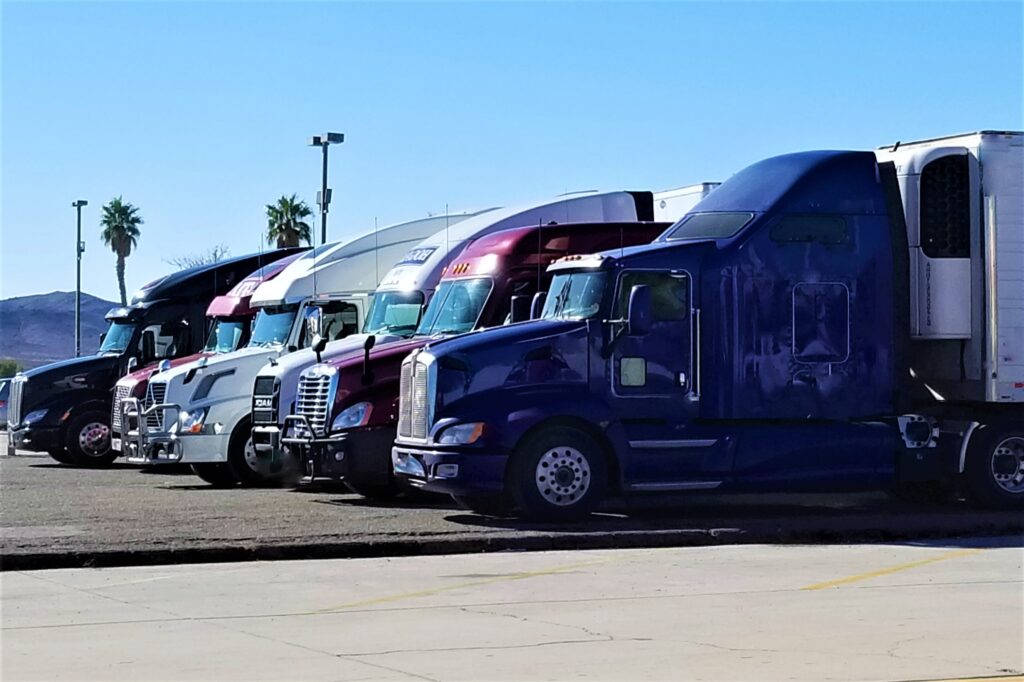I. Introduction
The logistics and transportation industry is a complex and dynamic field, essential for the global economy. It encompasses the planning, management, and movement of goods from their point of origin to the final destination. Within this industry, the roles of freight brokers are critical in ensuring efficient and reliable transportation of goods.
- Understanding Co-Brokering and Double Brokering: In this context, two terms often arise: co-brokering and double brokering. While they might sound similar, they are distinct concepts with significant implications in freight logistics.
II. What is Co-Brokering?
Co-brokering refers to a legal and collaborative arrangement between two licensed freight brokers.
- Definition: Co-brokering occurs when two freight brokers join forces to facilitate the transportation of a load. This partnership is typically forged when one broker does not have the necessary resources or expertise to handle a specific shipment and thus, collaborates with another broker who does.
- Role and Function in the Industry:
- Partnership and Collaboration: Co-brokering is about partnership and leveraging mutual strengths. This approach is particularly beneficial for handling specialized or high-value shipments requiring specific handling or routing expertise.
- Enhancing Service Quality: By combining resources and expertise, co-brokers can offer improved service quality, ensuring that clients’ unique transportation needs are met efficiently and effectively.
- Legal and Ethical Practice: It is a fully legal practice, adhering to industry standards and regulations. Co-brokering maintains transparency and accountability, safeguarding the interests of all parties involved – shippers, brokers, and carriers.
III. What is Double Brokering?
Double brokering is a contentious practice in the transportation and logistics industry.
- Definition: This occurs when a freight broker, after securing a shipment from a shipper, passes it off to another broker or directly to a carrier without the original shipper’s consent or knowledge. This secondary transaction is often shrouded in opacity, leading to various complications.
- Common Scenarios and Examples:
- Broker-to-Broker Handoff: A broker receives a load from a shipper but, instead of handling it themselves, they pass it to another broker. This second broker might further pass the load along, exacerbating the lack of transparency.
- Unauthorized Carrier Engagement: The original broker might pass the shipment directly to a carrier without proper authorization, misleading the shipper about who is actually handling their cargo.
- Implications: These scenarios can lead to issues like loss of control over the shipment, increased risk of delay or damage, and potential contractual breaches.
IV. Similarities and Differences between Co-Brokering and Double Brokering
Though both practices involve multiple brokers, they differ significantly in their execution and legality.
- Similarities:
- Involvement of Multiple Brokers: Both co-brokering and double brokering involve more than one brokerage entity in the process of moving a load.
- Objective of Facilitating Shipment: At a basic level, both aim to ensure the delivery of goods from the shipper to the final destination.
- Key Differences:
- Legal Status: Co-brokering is a legal and transparent practice between consenting, licensed brokers. Conversely, double brokering often lacks transparency and can lead to legal issues.
- Transparency and Consent: Co-brokering is conducted with the full knowledge and agreement of all parties involved. In contrast, double brokering typically occurs without the shipper’s consent or knowledge, leading to a lack of transparency.
- Accountability and Control: In co-brokering, accountability is clear, and all parties understand their roles and responsibilities. Double brokering, however, can blur lines of accountability, leading to confusion and potential disputes.
Understanding these similarities and differences is crucial for stakeholders in the logistics and transportation sector to make informed decisions and maintain ethical and legal practices.
V. Legal Aspects
The question of legality surrounding double brokering is complex and multifaceted in the freight and transportation industry. Double brokering, while not explicitly illegal under federal law, often occupies a grey area that can lead to significant legal challenges. It can result in breaches of contract and, in certain circumstances, be deemed fraudulent, especially when it involves deception or misrepresentation. The Federal Motor Carrier Safety Administration (FMCSA), which regulates the transportation industry, does not directly address double brokering in its regulations. However, any practices that compromise safety or involve deception can attract regulatory attention. Freight brokers are thus urged to strictly adhere to FMCSA guidelines to ensure compliance and uphold ethical standards.
VI. Implications of Double Brokering
When a load is double brokered, it can lead to several adverse implications for all involved parties. One of the primary concerns is the lack of accountability; with multiple, unauthorized parties involved, it becomes challenging to track who is responsible for the shipment. This situation increases the risk of delays, loss, or damage to the freight, as there is a lack of direct control and oversight. Furthermore, the original terms agreed upon between the shipper and the broker might not be communicated to the third party, leading to potential misunderstandings and miscommunication. From an ethical standpoint, double brokering is often viewed as deceptive, involving a breach of trust. Legally and financially, it poses significant risks, including potential allegations of fraud and breaches of contract. Moreover, companies engaged in double brokering risk damaging their reputation, which can have far-reaching and long-term business implications.
VII. Real-World Examples
An example of double brokerage can be illustrated through a scenario where a freight broker receives a shipment from a shipper but instead of handling it themselves, they clandestinely pass it off to another broker. This second broker, perhaps unaware of the original terms, may then further subcontract the load to a carrier. This chain of transactions often leads to confusion and a breakdown in accountability. In one case study, a shipper entrusted a load to a broker, expecting direct handling and prompt delivery. However, due to double brokering, the load was passed through multiple hands, resulting in significant delays and a breach of contract. The shipper faced not only financial losses but also a tarnished reputation with their customers. Such real-world incidents underscore the ripple effects of double brokering, affecting trust, efficiency, and legal compliance in the logistics chain.
VIII. Co-Broker in Trucking
In the trucking industry, a co-broker plays a pivotal role. Co-brokering involves a legal and collaborative partnership between two licensed freight brokers, each bringing their unique resources and expertise to the table. This collaboration is particularly beneficial for handling specialized or complex loads that may require specific handling, routing expertise, or additional resources that a single broker might not possess. By working together, co-brokers can enhance service quality, ensuring that clients’ unique transportation needs are met efficiently and effectively. They contribute significantly to compliant and efficient freight movement by combining their knowledge and capabilities, thus ensuring adherence to industry standards and regulatory requirements. The co-brokering arrangement is not just about sharing the workload; it’s about enhancing the overall quality and reliability of freight transportation.
IX. Identifying Double Brokered Loads
Identifying double brokered loads can be challenging, but there are certain signs and tips that can help in detection:
- Inconsistent Information: Look for discrepancies in the paperwork. Inconsistencies between the load information provided by the broker and the carrier can be a red flag.
- Lack of Direct Communication: If the broker is reluctant or unable to put you in direct contact with the carrier, it might indicate double brokering.
- Unusual Routing or Delays: Unexplained delays or changes in routing, which don’t align with the original plan, can be indicative of the load being passed around.
- Verify Broker and Carrier Information: Check the broker’s and carrier’s FMCSA registration and insurance. Authentic and reputable brokers and carriers will have their information readily available and verifiable.
X. Preventing Double Brokering
Preventing double brokering involves diligence and proactive measures:
- Vet Freight Brokers Thoroughly: Establish the credibility of the freight broker. Look for brokers with a good reputation and solid references.
- Clear Contracts and Agreements: Ensure that your contract with the broker explicitly prohibits double brokering and outlines penalties for violations.
- Direct Communication Lines: Establish direct lines of communication with the carrier. Insist on being provided with the carrier’s information as part of the agreement.
- Monitor the Load: Utilize tracking technologies and regular check-ins to keep an eye on the load’s progress. This can help in quickly identifying any discrepancies.
- Educate Yourself: Stay informed about the common practices in the industry. Being aware can help you ask the right questions and detect potential double brokering scenarios.
XI. Conclusion
Understanding the differences between co-brokering and double brokering is crucial in the trucking and logistics industry. Co-brokering represents a legal, transparent, and collaborative approach to managing freight loads, often leading to enhanced service quality and efficiency. On the other hand, double brokering, characterized by its lack of transparency and potential legal issues, poses significant risks to all parties involved, including shippers, carriers, and brokers.
Recognizing the signs of double brokering and taking steps to prevent it are essential for maintaining ethical and legal standards in the industry. By fostering open communication, conducting thorough due diligence, and adhering to clear contractual agreements, stakeholders can safeguard their interests and uphold the integrity of the shipping process.
In conclusion, the distinction between these two practices is more than just a technicality; it’s a fundamental aspect of conducting business ethically and responsibly in the logistics sector. As the industry continues to evolve, staying informed and vigilant about these practices is key to building trust and ensuring smooth, compliant operations.

